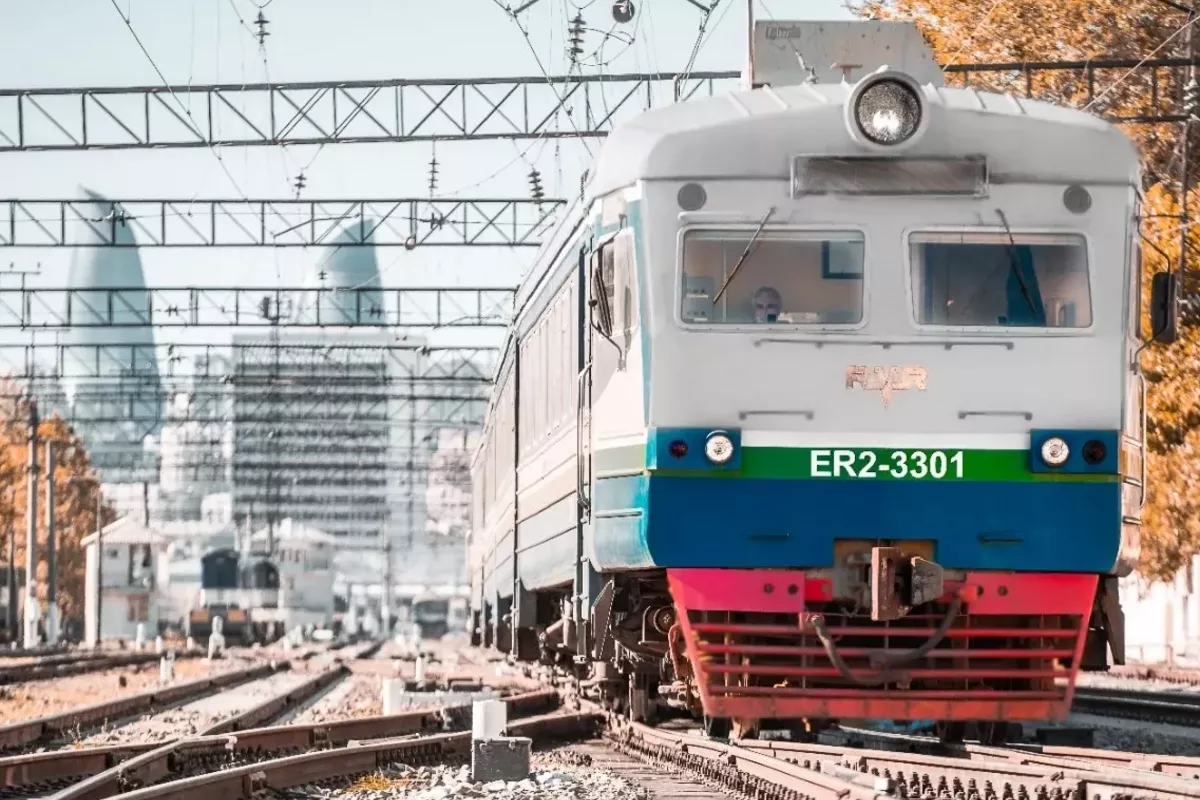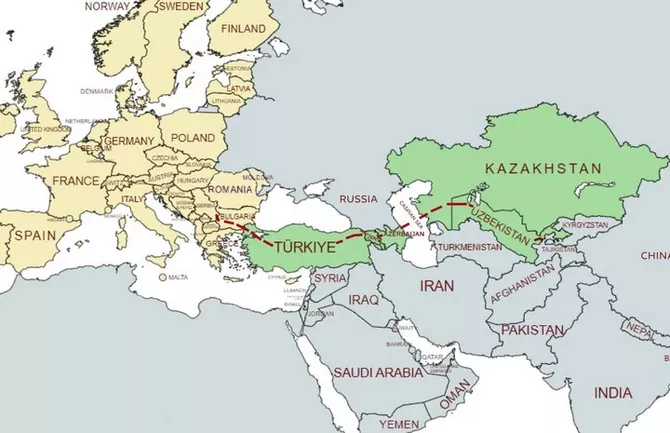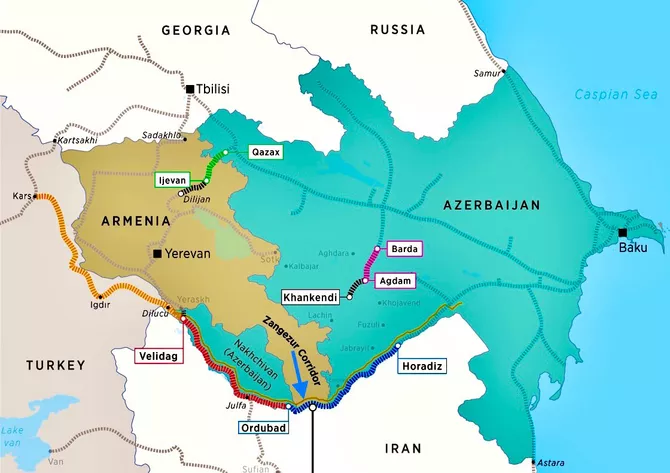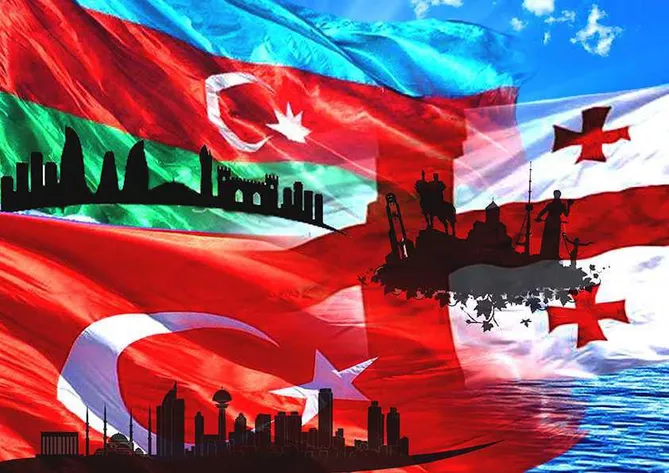
photo: Eurasianet
The signing of a new memorandum on the Baku-Tbilisi-Kars (BTK) railway in Almaty may at first seem like another routine agreement between Azerbaijan, Türkiye, and Georgia. In reality, however, it is a calculated move to strengthen the BTK’s competitiveness at a moment when the region is openly discussing a potentially disruptive alternative: the reopening of transit routes through Armenia. The question that now arises is whether Armenian transit could become a genuine rival to the BTK, or whether the trilateral project will remain the undisputed backbone of the Middle Corridor.
On October 1, during Transport Week in Almaty, the railway chiefs of the three countries signed a Memorandum of Understanding on the organization of freight transportation along the BTK. The goals were set with striking clarity: to optimize delivery times, to create predictable logistics schedules, and to guarantee sustainable conditions for shippers. This was not a declaration for the future - it was a direct response to the current debate on alternatives.
The new timetable is ambitious. Cargo traveling on the Alat-Boyuk Kesik (the Georgian border) and Gardabani-Akhalkalaki segments is required to arrive within 24 hours. The Yalama-Boyuk Kesik section must not exceed 48 hours. On the Turkish side, cargo from Kars to Mersin will be delivered within 60 hours, and from Kars to Istanbul in no more than 70. This means that freight from Alat to Mersin should now take just 4.5 days - a timeframe that places the BTK firmly among the most efficient rail corridors between Asia and Europe.
Just as significant is Georgia’s decision to launch a scheduled freight train from its Black Sea ports to Baku. Running along the Batumi-Poti-Tbilisi-Absheron-Sumgayit-Alat line, the train will connect the Black Sea directly with Azerbaijan’s major terminals. For cargo owners, this brings predictability, faster container transit, and lower costs. A fixed schedule is not merely an administrative improvement; it transforms the perception of the BTK from a promising route into a reliable one.

photo: Kazinform
The numbers already highlight this trend. In the first seven months of 2024, BTK transported 250,000 tons of freight. According to Kars Chamber of Commerce and Industry President Kadir Bozan, volumes are expected to double by year’s end. “We are approaching the transport goals set for 2030-2032,” he noted. “If the positive trend continues, the difference between this year and 2024 will be substantial.” These words underscore how quickly the BTK is moving from long-term projections to near-term achievements.
And yet, looming over these successes is the unresolved question of Armenia. For decades, Armenia’s borders have been closed to regional transit. But the geopolitical landscape shifted after the Karabakh conflict ended. Suddenly, reopening rail lines such as Kars-Gyumri became a topic not of theory but of negotiation. Yerevan and Ankara had discussed the matter since last year, but only after their Washington meeting on August 8 did the talks gain momentum.
For Georgian analysts, this poses a strategic challenge. If the Kars-Gyumri line were to be extended to Baku, it would be shorter than the BTK and thus potentially more attractive for shippers. A Baku-Gyumri-Kars route would directly compete with the Georgian section of the Middle Corridor. In effect, the full “unblocking” of Armenian transit could create two new alternatives on the Türkiye-Armenia-Azerbaijan axis: the Zangezur corridor and the Gyumri-Kars line. Both would threaten Georgia’s role as a transit hub, and by extension, the unique advantage of the BTK.

photo: caspianpolicy
Meanwhile, the BTK itself has struggled with bottlenecks. Key Georgian segments, including the Rustavi-Marabda line (152 km) and the Marabda-Kartsakhi section (32 km), remain unfinished despite Azerbaijan’s $900 million investment. In 2022, delays forced Azerbaijan to take direct responsibility for modernizing Georgia’s infrastructure, as Tbilisi was seen as too slow and short-sighted in its approach. Freight transport was temporarily suspended while 184 kilometers of track were upgraded. Only in May 2024 was modernization completed and full traffic resumed.
These interruptions hurt the BTK’s reputation, leaving space for Armenia’s transit option to enter the conversation. But one must be cautious in overestimating Yerevan’s prospects. At best, Armenia and Türkiye might open a small segment near their borders - a symbolic step that would not automatically transform Armenia into a full participant of the Middle Corridor. Unlike the BTK, which is backed by three states, billions of dollars in investment, and years of operational experience, Armenia lacks the infrastructure, the political consensus, and the regional trust to make its ambitions a reality in the near term.
Moreover, the BTK has already demonstrated its strategic value. It cut Asia-Europe delivery times from 40-60 days to 12-14, something Armenian transit cannot match without enormous new investment. With the new timetable, shippers gain not just speed but certainty, which in the logistics industry often matters even more than distance.

photo: AA
The stakes extend beyond economics. For Azerbaijan, Türkiye, and Georgia, the BTK is not just a railway - it is a statement of regional cooperation and independence. By building and modernizing this route, the three countries have reduced their reliance on other transit corridors and positioned themselves at the heart of Eurasian trade. Armenian transit, by contrast, remains a hypothetical promise that is deeply entangled with unresolved political disputes.
So, will Armenian transit challenge the BTK? Perhaps one day, but not yet. For now, the BTK remains the stronger, more credible, and more profitable option. If anything, the debate over Armenia has pushed Azerbaijan, Türkiye, and Georgia to sharpen their own strategy, invest more heavily in modernization, and present the BTK as a disciplined, predictable, and future-oriented corridor.
The lesson is clear: competition is inevitable, but real competition comes only when promises meet performance. The BTK is already delivering; Armenian transit is still only being imagined.
By Tural Heybatov
Share on social media